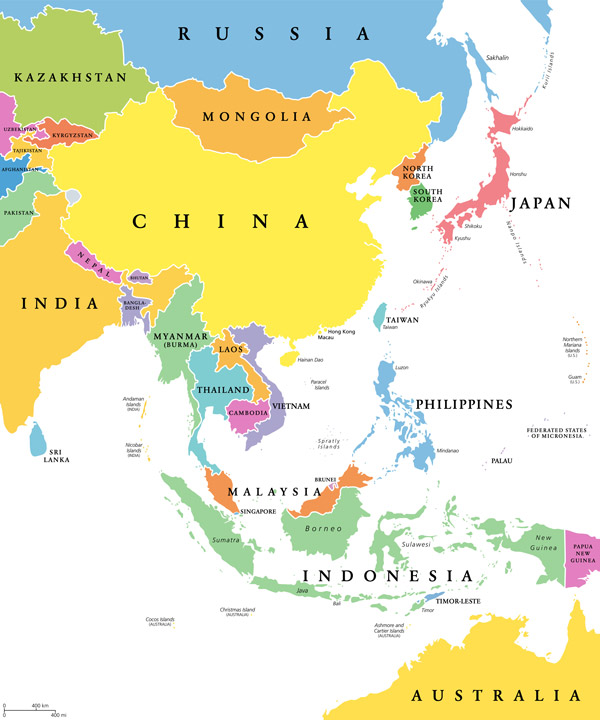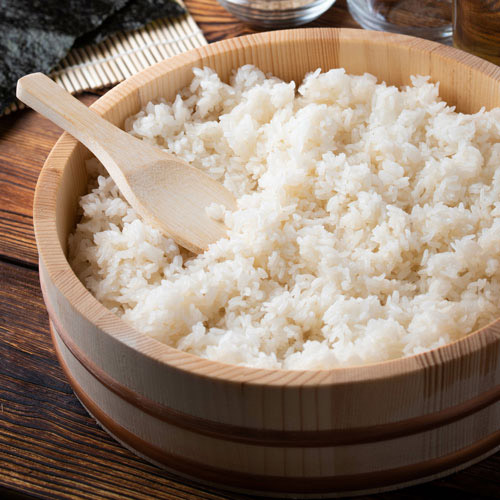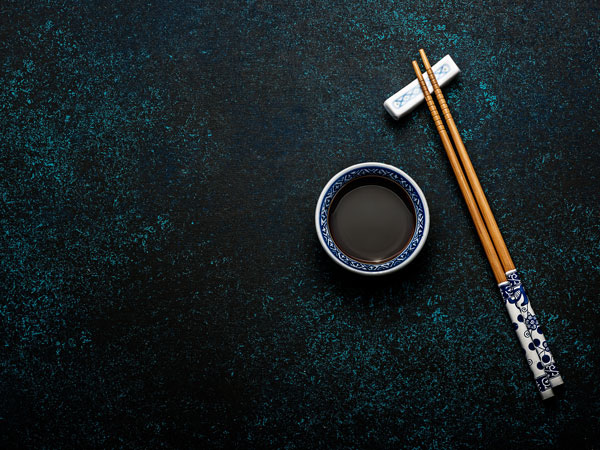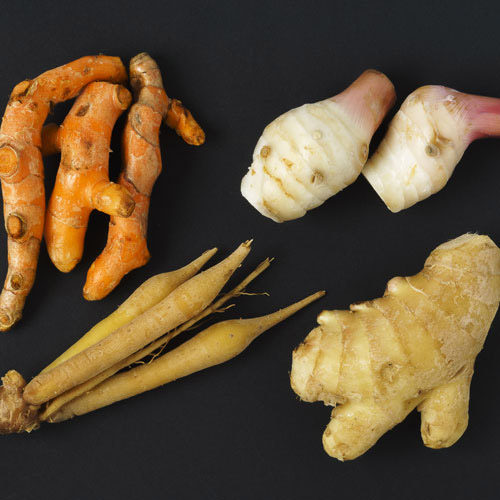Brands
Guide to Southeast Asian cuisine and ingredients
By: admin On: 23 February 2022

Discover exciting spicey Southeast Asian cuisine and ingredients. The food of Southeast Asia is made up of a vast range of regional cuisines. lets review them.
Generally, when we talk about Asian cuisine we are referring to the cooking of Southeast Asia. The foods here are vastly different, yet share many similarities that come from shared ingredients and a cultural crossover. India, whilst a huge part of Asia (and just next door), has its own unique differences and tends to be grouped into a different category of foods altogether.
The foods and flavours of this corner of the world have had a huge influence on the food of Australia and in this article we explore some of the cuisines of the area and the ingredients they share.
Asian cuisine

The food of Southeast Asia is made up of a vast range of regional cuisines. The area stretches from Korea and Japan, through China, and down to Myanmar, Thailand and Vietnam. Nestled in the Pacific Ocean are the islands of Malaysia, Indonesia and the Philippines.
The palette of ingredients changes according to geography, so that the foods of mainland China give way to the fish and fruit of the island nations. Cultural influences change the way that ingredients are prepared, giving rise to a complex tapestry of foods and flavours.
Rice - an Asian food staple
Rice is central to all Asian cuisine. A hugely important crop, it is deeply embedded in all aspects of culture. Rice is not only the staple grain at most meals, but is central to the production of two other very important ingredients. Vinegar, and noodles.

Rice noodles
Rice noodles come in all shapes and sizes, from the thin vermicelli style to wide flat ribbons. Somewhere in the middle sits rice stick noodles which are a long flat version that look a bit like linguine. Rice noodles are more popular than wheat noodles in Southern China, as well as Thailand and Vietnam. The Japanese also eat noodles made from rice.
Rice noodles are exceptionally quick and easy to make, as even the thicker ones require no cooking. They are made from already cooked rice so need only soaking to rehydrate and heat.
Try our organic rice noodles
Find out more about rice stick noodles in this article...
Rice vinegar
Rice vinegar is a joy to use and once you discover its subtle sweetness and gentle acidity you may want to use it anywhere that you would use vinegar. Used extensively in both Japanese and Chinese cooking, rice vinegar is fermented slowly so it has great depth of flavour alongside the acidity. Thai cookery also uses rice vinegar.
Read our article 'what is rice vinegar'.
Soy - an ancient ingredient
Soybeans originated in Southeast Asia and are another hugely important crop to the region. Soy has been around for thousands of years, and as such plays a central role in all of the regional cuisines. Soybeans are used in cooking as whole beans, and are used to make tofu, but their major contribution has to be soy sauce.
Soy sauce

Soy sauce is one of the world's greatest condiments and is now used in cooking all over the world. Used in cooking to impart flavour and after cooking in the form of a dressing or a dip, soy sauce adds sweetness, saltiness and savouriness. There is nothing quite like it for depth of flavour and its ability to bring other ingredients to life.
There are many forms of soy sauce. China and Japan both produce soy sauce, with different flavour profiles, and Indonesia also makes their own version 'kecap manis' which is thicker and sweeter than both Chinese and Japanese soy sauce.
Choose lighter varieties for dressing and dipping, sometimes cooking, and keep the dark stuff for adding to slow cook stews, and braises. Pair lighter sauces with chicken, fish and seafood, or vegetables. Dark soy will stand up to and accentuate red meats. Apart from slow braised meat dishes, add soy sauce right at the end of cooking.
Japanese soy sauce
Japanese soy sauce tends to be more subtle than Chinese soy sauce. Known as shoyu, it is brewed for several months at least and is lighter, less salty, and more complex. Like soy sauce in China, it also comes as light and dark soy, but the darker version is more similar to the Chinese light variety.
Try our organic Japanese style soy sauce
Chinese soy sauce
Chinese light soy sauce is the first extraction and has a lighter feel and more delicate fragrance. Dark soy sauce in China is matured for longer, and has caramel added that gives it the characteristic dark colour and rich sweet depth. There is also a regular Chinese soy sauce that comes somewhere in between.
Try our organic Chinese style soy sauce
Low sodium soy sauce
Low sodium soy sauce is simply standard soy sauce (usually, but not always, Chinese) that has had up to half of its salt content removed.
Try our organic low sodium soy sauce
Find out why soy sauce might just be the greatest seasoning ever...
Spices and aromatics - bringing food to life
Aromatics
Also known as 'wet spices', there are many ingredients that are used fresh as the aromatic base to food across the region. Many are also found in powder form which, when the quality is exceptional, can be used as an adequate substitute. Some, like ginger, have different uses for the dried form.
Garlic, ginger and chilies

Garlic, ginger, and chillies are the holy trinity of Southeast Asian cooking. Together, or separately, they find their way into practically every dish, in every region. Some use the heat of chilies more sparingly than others. In Thailand, for example, heat is part of the flavour profile that defines the cuisine. Chinese food, on the other hand, is not something we associate with chili, yet many Chinese dishes come with a blast of chili heat. Japanese food often has a tendency towards the milder side, yet chilies are used. Japanese seven spice (shichimi) includes chili, and Sichuan pepper (known as sancho in Japan).
Garlic can be pungent and garlic can be sweet. The longer it is cooked, the sweeter it becomes. It also burns easily, and then it becomes bitter. In Chinese cooking, garlic forms a base with ginger and spring onion. Korean cooking, heavily influenced by China, uses more garlic than Japanese food. Garlic is used a lot in the food of Vietnam, and is also found in Thai food; particularly in Thai curries. Use raw garlic to add pungent heat to a cool cucumber salad, alongside ginger in the base for a stir-fry, or add an uncrushed clove to the cooking oil for a few minutes to add just a hint of flavour.
Ginger is pungent, sharp and citrussy. It is used widely in Chinese cooking. Used raw, it is hot and sharp. During cooking, it mellows, losing the citrus top notes and its sharp corners. Cooks in Thailand and Vietnam prefer galangal, the less robust cousin of ginger. In Japan they use young ginger, which is tender and mild. Japanese pickled ginger is used to refresh the palate. Of all the wet spices, fresh ginger is the hardest to replicate using dried powder. However good grade dried ginger does retain a lot of those pungent top notes provided by fresh ginger.
Try our organic galangal powder
Turmeric
Turmeric is a grounding spice. Like coriander it forms the base of many spice blends, tying all the other flavours together with its earthy depth. Cooks in the West are only just becoming familiar with the fresh form of turmeric, which is a root like ginger or galangal. Dried turmeric finds its way into most curry powders across the region. Fresh turmeric is used as a base in curry pastes.
Try our organic turmeric powder
Read our article about using galangal, ginger and turmeric in Asian cooking...
Lime leaves and lemongrass
Thai food and Vietnamese food are well known for their love of lemongrass, yet it also finds its way into Chinese food too. Lemongrass provides a hit of clean citrus flavour but without the acidity of lemon. It also has a slight pungency similar to ginger. Lemongrass powder is widely used as a perfectly acceptable substitute for fresh.
Kaffir lime leaves are pretty much the taste of Thailand, and found in Vietnamese cooking too. The leaves are deeply aromatic, with the sharp scent of spicy lime but with none of the acidity. Kaffir lime leaf powder is also a perfectly acceptable substitute for fresh. A good quality powder will retain more of the flavour than a low quality and badly stored dried leaf.
Try our organic lime leaf powder
Try our organic lemongrass powder
Make our super easy Southeast Asian spice blend...
Tamarind
Tamarind is a souring agent, used to enliven a dish by bringing acidity to the palette. Popular in Chinese and Thai cooking, it often comes in block form and looks a little like dates. Sour and tangy, it is also fruity. Tamarind is a really complex and interesting alternative to the more common ways of bring acidity to a dish.
Fresh herbs
The foods of Thailand and Vietnam are notably packed with fresh fragrant herbs such as mint, basil and coriander. You might occasionally come across basil in Japanese cooking, but are more likely to find shiso, wasabi leaf, or mizuna. Chinese cooks may use coriander leaf sometimes.
Mint is a key ingredient in Vietnamese cuisine. Fresh mint is sweet and cooling, and also finds its way into Thai food.
Basil comes in many forms, and Asian basil is different to European basil. Although Japanese cooks may use basil occasionally, it is found mostly in Thai cooking. Vietnamese food also features basil. They use a form of sweet basil, which is closest to the standard flavour we know as basil yet slightly more anise. Thai basil, and holy basil, are more pungent and peppery, and Thai cooks also favour a lemony variety of basil.
Coriander is used widely in Thai cooking, where they use the leaf and the root as well as the seeds. A divisive herb, that you either love or hate, fresh coriander is almost invariably added at the end of cooking.
Curry leaves are associated with Indian food, yet are also used in Thailand. Dried curry leaves have a savoury, toasted aroma. Fresh, they are sweetly citrus with a herbal, peppery edge.
Shiso is found in Japanese food and Korean food. It has a pungent flavour, similar to mint.
Spices
Unlike the food of India, Southeast Asian cuisines keep their spice palette relatively simple preferring to rely on fresh herbs and aromatics. There is of course always an exception to the rule. Chinese cooks use spices more regularly than Thai cooks, but even some Thai curries come with complex blends of dry spices. Chinese five spice is a blend of star anise, fennel, peppercorns, cloves and cinnamon.
Some of the fresh aromatics come in dried powder form, and these we have mentioned above. Turmeric powder, for example, is used as often, if not more, than its fresh form. Lemongrass powder is more of a convenience, and would be used fresh wherever available.
Coriander seed is a mild, earthy spice with lemony top notes. Often used alongside cumin, it is a base spice that lends a subtle depth to food.
Cumin has a far more pungent flavour than coriander and is more associated with Indian and Middle Eastern food. It is however used, sparingly, by Chinese, Japanese and Thai cooks.
Star anise is a familiar flavour in Chinese food yet is also used by Thai cooks. It has an unmistakeable licorice taste and used wisely (ie sparingly) can bring life to your dish.
Cloves are found in the foods of Japan and Thailand, as well as China. They are used to add a savoury warmth, and like star anise must be used sparingly to avoid tasting medicinal.
Cinnamon and cassia have similar flavours, but cassia is more pungent and less sweet than cinnamon. Chinese cooks favour cassia, whilst cinnamon is found in Thai food.
Green Cardamom is sweet and aromatic, adding warmth and citrus notes to a dish. You might find cardamom in some Japanese food, and Thai spice blends.
Fennel seed also has a licorice flavour but is more green and herbal than the woody star anise. It is used widely in Chinese cooking.
Peppercorns are widely used for their abilities to awaken the palette and enhance the other flavours in a dish. It is used as a spice, and as a seasoning, by cooks across the world. Chinese food favours white and black peppercorns, whilst in Thai food you might find fresh green peppercorns.
Spice pastes and Asian sauces - shortcuts to success
Asian sauces and spice pastes are more than just shortcuts. They form the basis of many dishes, and are great examples of the alchemy of cooking. Sauces and spice pastes become more than just the sum of their parts. All sorts of reactions occur between the ingredients themselves and the aroma molecules on the tongue to create a complex experience of flavours.
Many of the classic dishes of Asian cuisine begin with a spice blend, paste or sauce. Savvy cooks understand that simply adding the ingredients one by one will not have the same result. A homemade spice paste made from scratch is a beautiful thing, but even a native cook will reach for a jar as often as not.
Chili paste and curry paste
Pastes are mixtures of wet spices (aromatics such as garlic, ginger, or lemongrass, as well as onion, and chilies) and sometimes dry spices added in. They generally form the base of the dish and require frying (cooking out) at the beginning of the cooking process. More often than not, unless the dish is a dry dish, you will need to add some form of liquid for the final simmer such as stock or coconut milk.
Chili paste
Chili paste is a handy form of chilies that can be added to pretty much anything, and can also be used as a condiment in much the same way as, say, mustard. The ingredients in chili paste vary, yet they often introduce more depth of flavour than simply chilies, by way of additional aromatics such as onions, garlic or sugar. Tamarind is often added to add a sour edge to the flavour profile.
Red curry paste
Red curry paste is the base of Thai red curry, which is the hotter of the Thai curries. Thai red curry is sharper than its yellow curry cousin, with the inclusion of lime leaf in the paste and a squeeze of fresh lime to finish the dish. Red curry is bold and robust, so as well as chicken it makes the perfect salmon curry. Finish with a flourish of fresh coriander leaf.
Try our organic red curry paste
Yellow curry paste
Yellow curry paste is the base of Thai yellow curry, which is the medium spiced one between the three Thai curries of red, yellow and green. Slightly sweet, without the sharp edge of lime, yellow curry is full of earthy turmeric that ties all the other flavours together as one aromatic whole. Made with most of the same ingredients as red curry paste, yet in different quantities, it is a blend of shallots, lemongrass, garlic, galangal and ginger, coriander seed, chili, cumin, and turmeric.
Makes a great chicken or vegetable curry, or try adding a smaller amount to infuse a fish stew.
Try our organic yellow curry paste
Tom yum paste
Tom yum paste is the base for a Thai hot and sour soup of the same name. An aromatic blend of chilies, lemongrass, galangal, sugar, and shallots, the paste is simmered in stock with mushrooms (straw or oyster) and prawns. Finish with a squeeze of fresh lime and a handful of chopped fresh coriander leaf. you could add a touch of fish sauce if you like. There is also a creamy version that has coconut milk added.
Asian sauces
Sauces can be grouped into condiments and cooking sauces. Condiments are used as they are, either to add a dimension of flavour when cooking or as an extra element added before or during eating. Most ready made cooking sauces are already cooked and are added towards the end of cooking.
Sriracha
Sriracha is a hot sauce that is now popular across the world and has become the essential source of heat for everything from chicken wings to popcorn. It is made from chilies, sugar, garlic and vinegar. Commercial sriracha is thicker than the thinner, sharper, Thai condiment.
Try our organic sriracha sauce
Read our article - what is sriracha and is it hot?
Japanese soy dressing
Used widely in Japanese cuisine, Japanese soy dressing is the equivalent of the western vinaigrette dressing. Used to enliven simple dishes such as noodles and vegetable salads (hot and cold) it is a deeply savoury dressing of soy sauce, sesame, vinegar, mirin and ginger. The presiding flavour is the umami of soy, with added sharpness from vinegar that is tempered by the sweetness of mirin. Ginger forms a warm aromatic background to many Japanese flavour profiles and sesame adds a nutty toasted depth.
Japanese soy dressing is great tossed into an Asian style slaw or simple steamed greens.
Try our organic sesame soy Japanese dressing
Chili sauce
Chili sauce appears all over Southeast Asia as a bottled condiment. It varies in strength and thickness. The general flavour profile may also differ, yet generally it is a hot thick blend of chillies, sugar, vinegar and garlic. It can be used anywhere you would use fresh chilli, or require a bit of heat with an additional dimension of flavour.
Sweet chili sauce
Sweet chili sauce is a popular Thai dipping sauce, used as a condiment rather than a cooking sauce. Made from chilies, sugar, garlic, and vinegar, it is more sweet than sour.
Try our organic sweet chili sauce
Stir fry sauces
Black pepper sauce
A Chinese restaurant favourite, black pepper sauce is the base of a popular chicken or beef stir fry. We like it with beef, as the meat stands up so well to the bold black pepper which seems to deepen the flavour of the meat. The sauce is made with soy, sugar or honey, and plenty of black pepper. The main aromatic is garlic and a touch of sesame adds an extra savoury edge. Stir fry chunky onions and pepper, with lean beef, and add the sauce near the end.
Try our organic black pepper sauce
Holy basil sauce
Holy basil grows across Southeast Asia but is often used medicinally rather than in food. It is however used widely in Thai food, and is a main ingredient in one of the most popular street food stir-fry dishes known as pad kra pao. The star of the dish is of course the holy basil. Not sweet Italian basil, or even aniseed-y Thai basil, but the distinct citrus pepper notes of holy basil.
The aim is something sweet, hot and salty. Hot with chilies; aromatic with garlic, and of course the holy basil that underlines it all. Stir fry with minced chicken or pork, and serve with rice and perhaps a fried egg on top.
Try our organic holy basil sauce
Sweet and sour sauce
Sweet and sour sauce has long been part of the Chinese repertoire, with many regional variations of the sauce itself and also what to do with it. Essentially, sweet and sour sauce is a slightly syrupy, somewhat glutinous blend of sugar and vinegar with a spicy note such as ginger.
The sweet and sour that we are most familiar with has its roots in Cantonese cuisine, in the much loved sweet and sour pork stir-fry dish. The battered style of sweet and sour is a popular Korean crossover dish, and sweet and sauce is actually the secret to the best Korean fried chicken.
Try our organic sweet and sour sauce
Teriyaki sauce
Teriyaki is a Japanese dish of grilled meat or fish with a glossy sauce. Teriyaki sauce is a blend of soy sauce and mirin (or sugar) with a hint of ginger. The ingredients are grilled without marinade and the sauce is added at the end.
Try our organic teriyaki sauce
Find out how to make teriyaki chicken like a Japanese restaurant...
Pad thai sauce
Pad thai is a classic stir-fried Thai noodle dish. Variations abound but the essential ingredients are rice noodles, beaten egg, beansprouts, and a protein such as prawns or chicken. Crushed peanuts to garnish are also non-negotiable. The flavour profile is sweet, salty and sour. A squeeze of lime juice to serve adds fresh sour notes.
Try our organic pad thai sauce
Check out our full range of Asian groceries...






